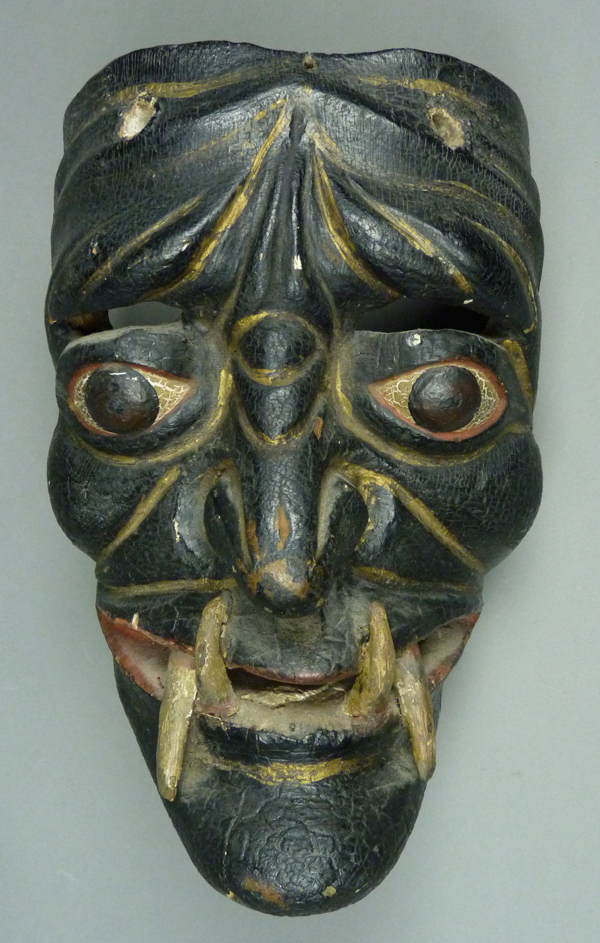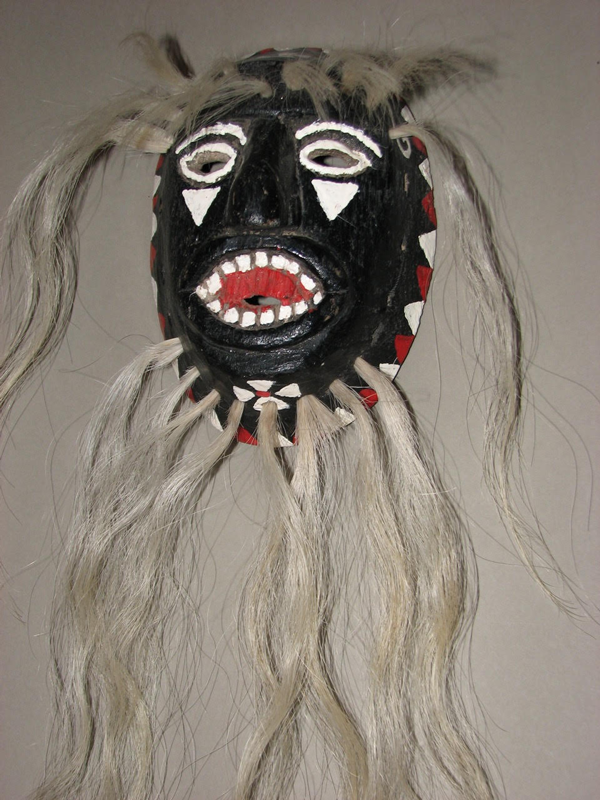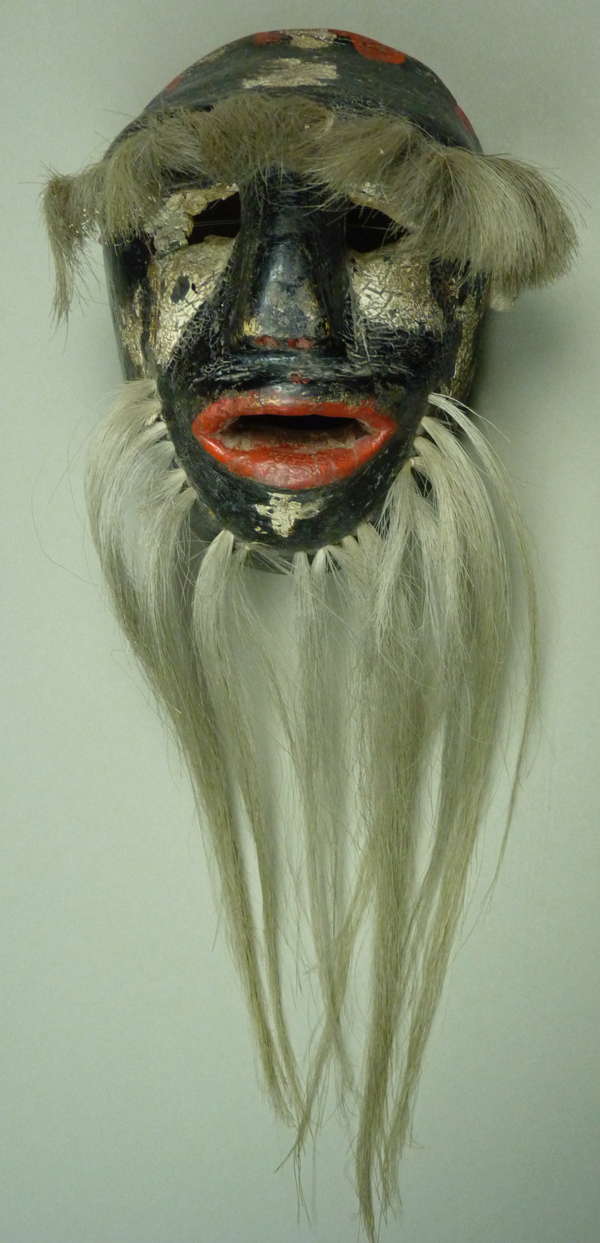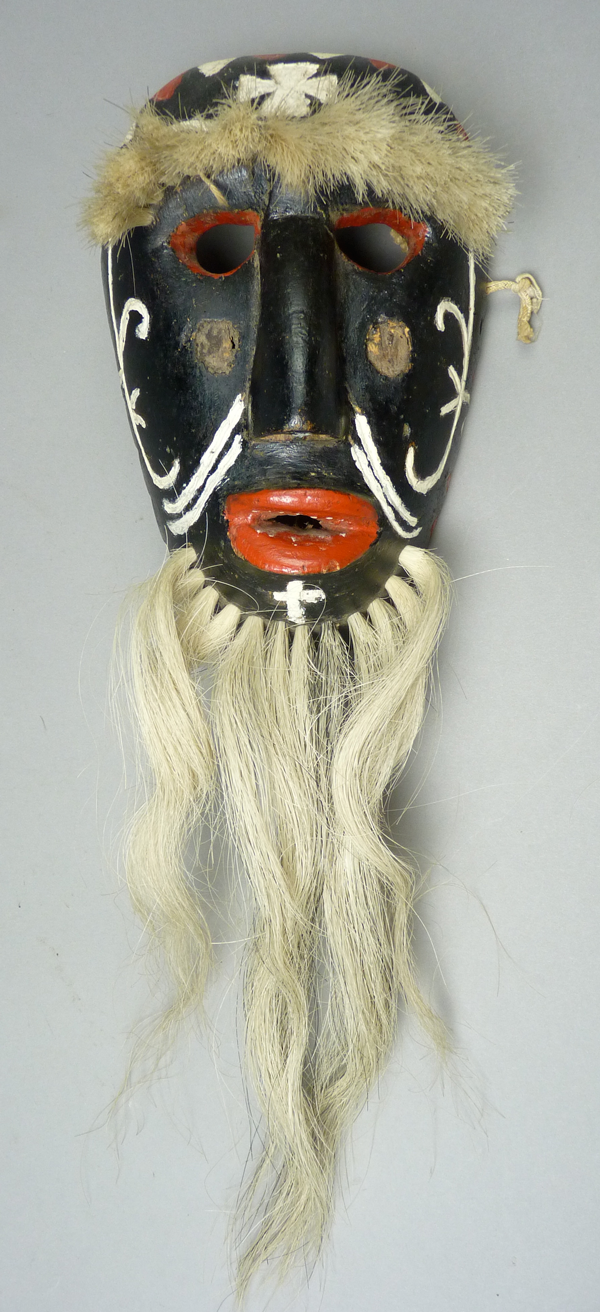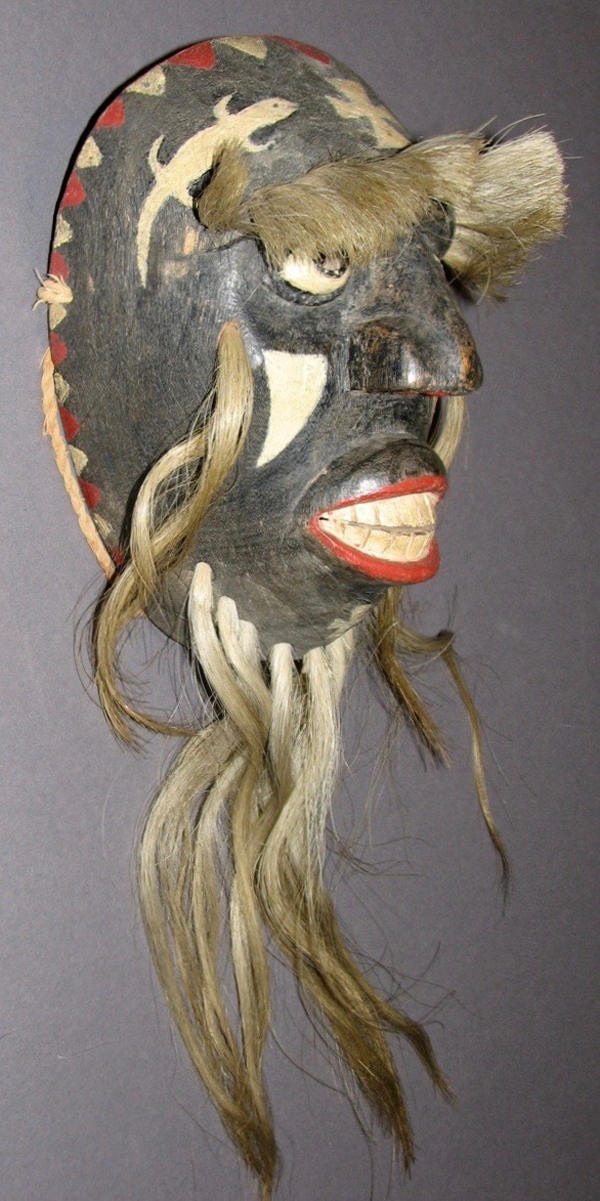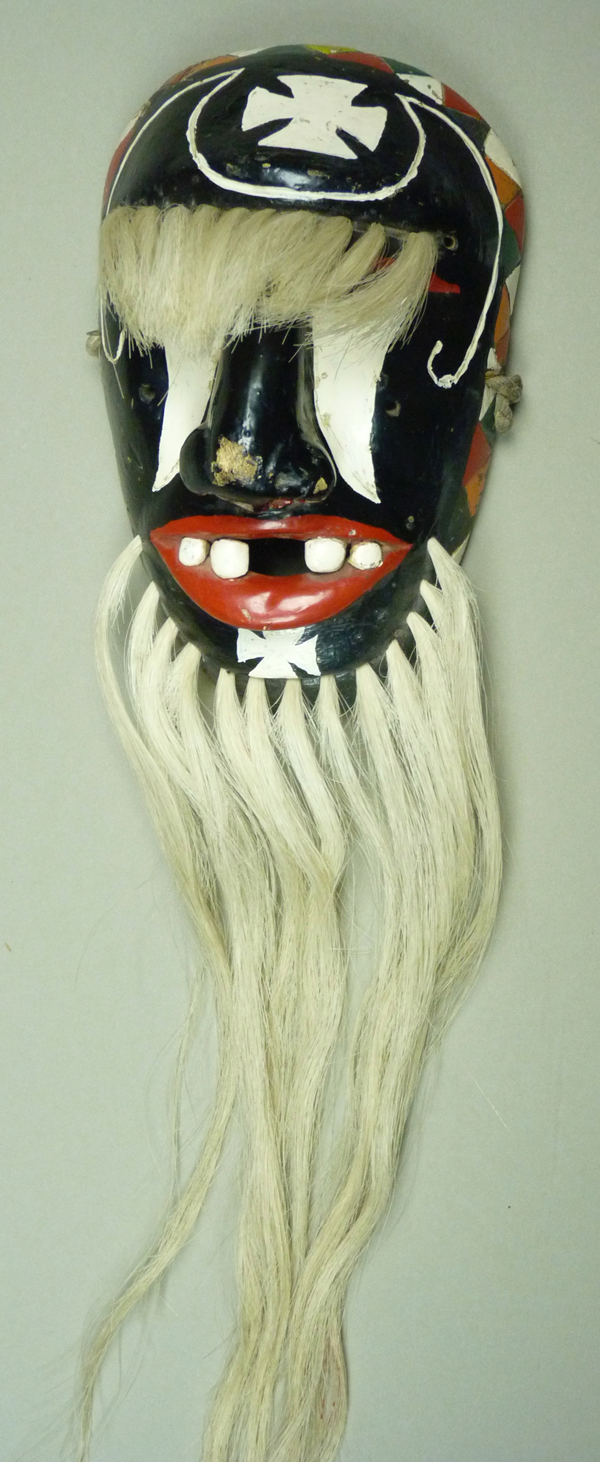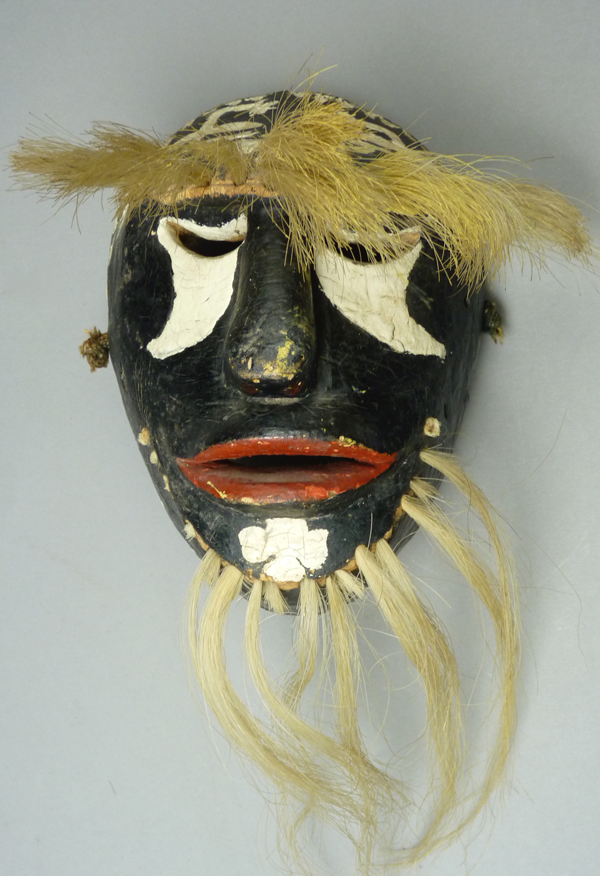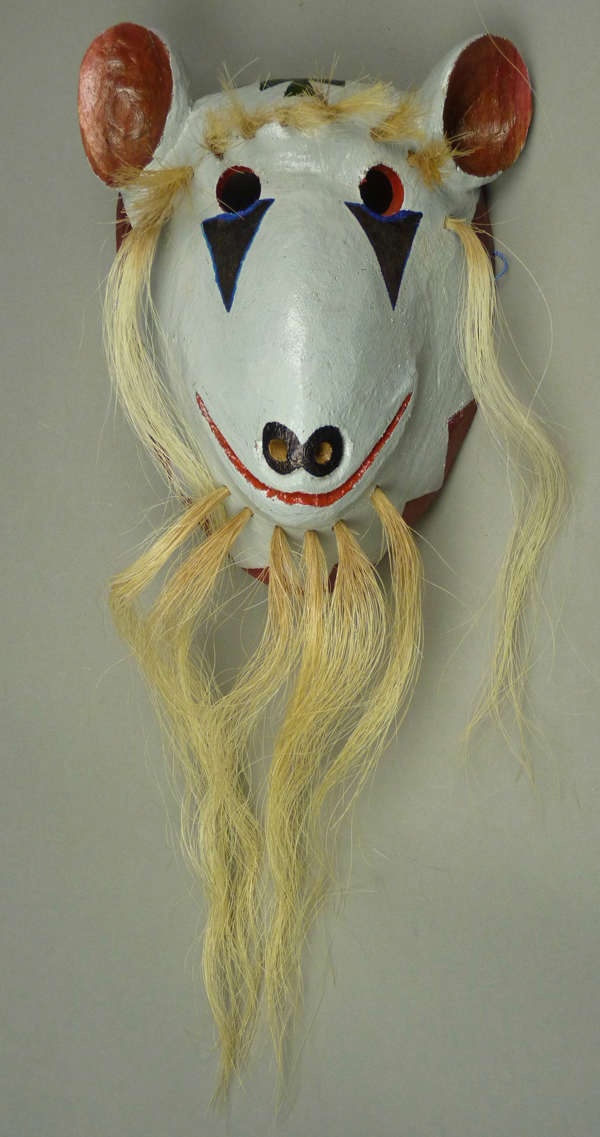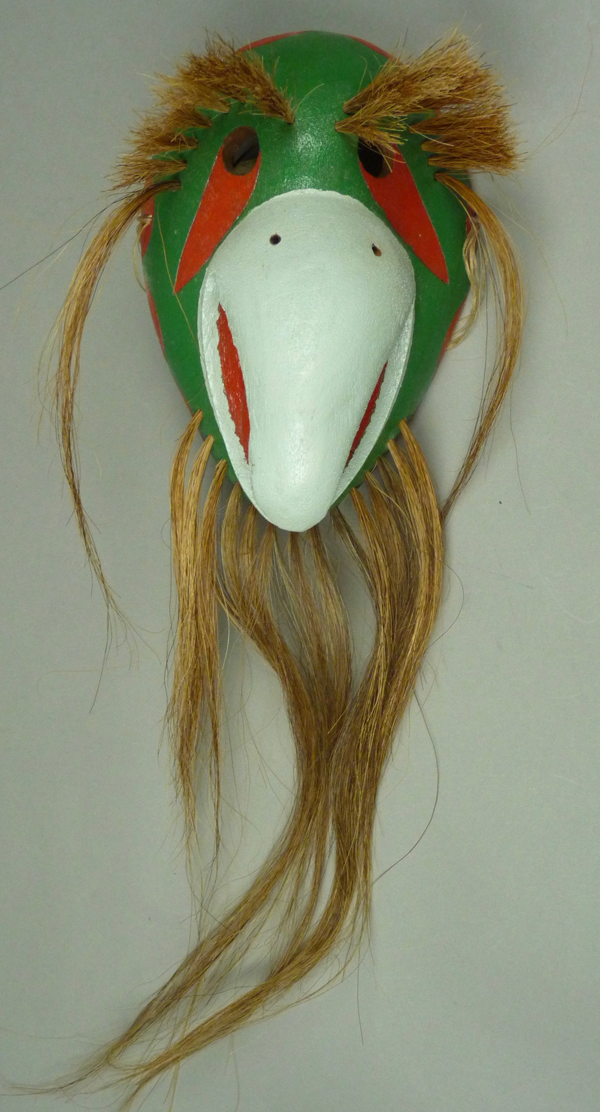Following the conquest of Mexico by Cortez and his conquistadors, Roman Catholic missionaries arrived with the charge to convert the Indians to Christianity. Because these Indians had traditionally used masks, costumes, music, and dramatic performances to portray their gods and beliefs, it seemed obvious that such theatrical practices could be used to teach them about European religion, so plays that had long served to convey and reinforce Christian teachings in Spain and other European nations were adapted by the missionaries for use in New Spain. Of these, the most famous are La Pastorela (the Shepherd’s Play) and Los Moros y Cristianos (the drama of the Moors and Christians). I have told quite a it about the latter play in earlier posts, particularly noting how this became the model for other dance dramas, such as the Santiagueros. Today I will introduce a series of posts about the Shepherd’s Play.
In my post of Aug 11, 2014, I had shared with you some images of a Diablo mask that was used to portray Satan in a Michoacán performance of the Shepherd’s play. My purpose then was to illustrate a remarkable fact—Mexican Masks, Donald Cordry ‘s famous book, contains a curious mixture of inauthentic (decorative) masks and extremely important authentic masks and related dance photos. Today we will revisit that terrific Diablo mask, which is one of my favorites, and compare it to dance images provided in Cordry’s book to introduce the Pastorela dance. Here is this Diablo that I first showed you nearly three years ago.
Spencer Throckmorton, an ethnographic arts dealer in Manhattan, is particularly fond of devil masks, and he once devoted an entire wall of his apartment to their display. In 1995 he sold those masks, and I purchased this beautiful old Diablo from his wall. It was originally collected near Lake Patzquaro, in Michoacán. It had four holes around the forehead, the central pair were each 3/8” in diameter; I wondered about the purpose of those holes. Paging through Cordry’s book, I found photos (Plate 7 on page 6 and plate 307 on page 247), which included a mask that resembled and explained my mask, and it even appeared to be by the same hand. Those photos were taken by Donald Cordry in Cherán, Michoacán, in 1935. The mask in the photos had curved wooden horns projecting from holes on the sides, along with carved snakes writhing across the forehead.

